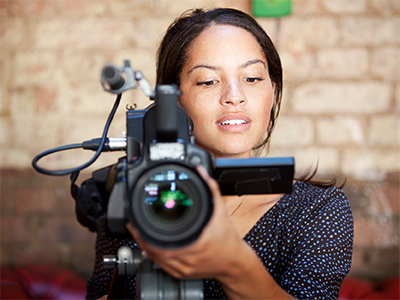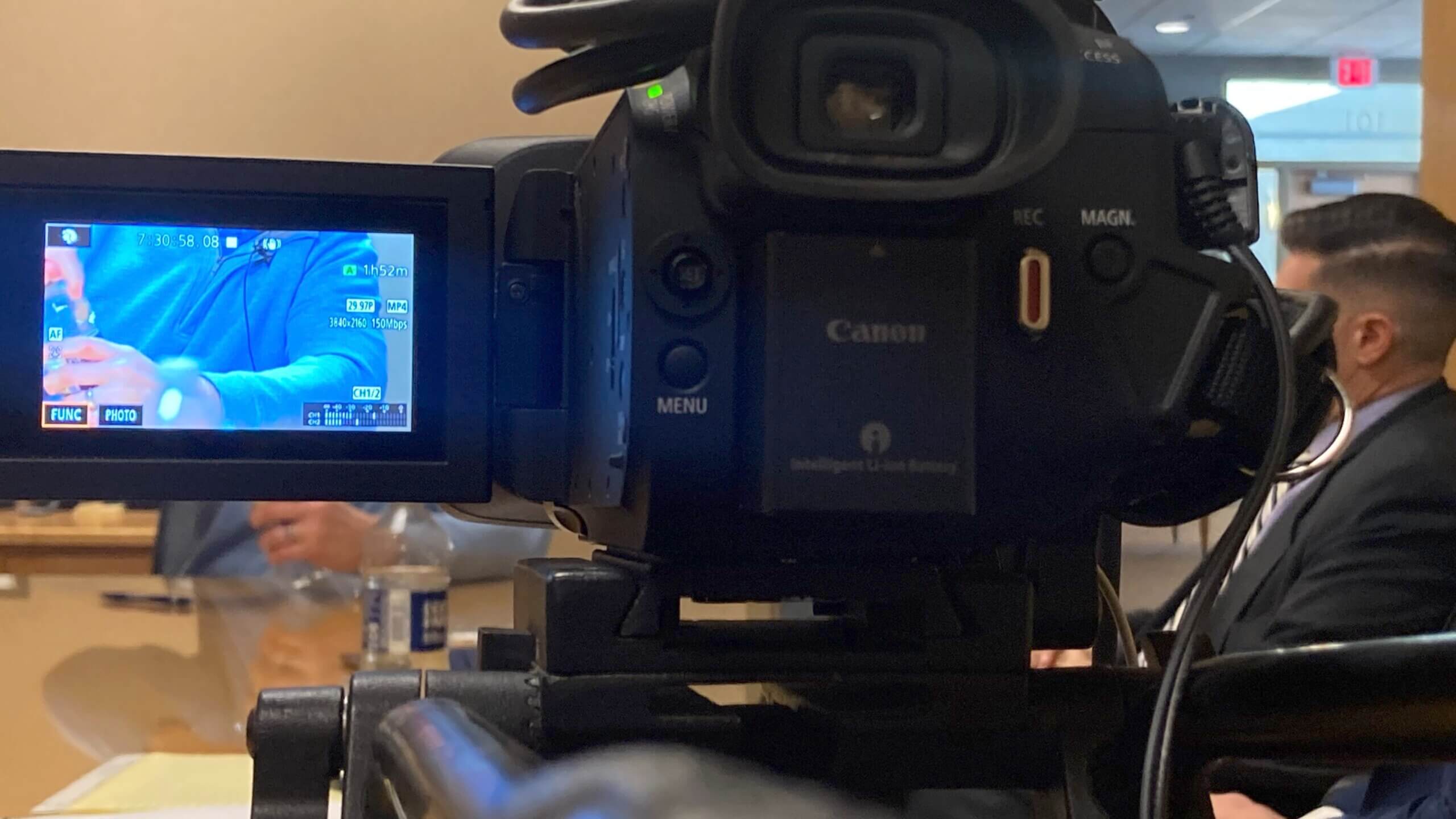Why Legal Videography is Necessary for Accurate Legal Paperwork
Why Legal Videography is Necessary for Accurate Legal Paperwork
Blog Article
Looking Into the Devices of Lawful Videography: Introduction Its Operation in Shielding Genuine Visual Testimony for Judicial Procedures
In the realm of judicial procedures, the function of lawful videography stands as a cornerstone in maintaining and presenting aesthetic proof. As innovation proceeds to development, the mechanisms behind lawful videography have ended up being increasingly complex, offering an important layer of credibility to testimonies recorded on video.
Historic Advancement of Legal Videography
Checking out the historical development of lawful videography reveals a substantial transformation in the recording and presentation of visual proof within the lawful landscape. In the past, legal procedures greatly relied on composed photographs and transcripts to record occasions and offer evidence. With the advent of video innovation, the legal market experienced a standard change in just how aesthetic testimony was captured and provided.
The evolution of legal videography can be traced back to the late 20th century when innovations in video recording tools made it extra easily accessible for use in courtrooms. This technological improvement not just enhanced the accuracy and integrity of aesthetic proof but additionally transformed the way situations existed to juries and courts (Legal Videography). Lawyers began to acknowledge the convincing power of video recordings in communicating emotions, nuances, and non-verbal signs that created photos or transcripts alone could not capture effectively

Technology Improvements in Video Clip Documentation
What key technical improvements have changed video clip documents in the legal area? The lawful area has actually seen significant developments in video documentation technology that have actually boosted the credibility and dependability of visual evidence in judicial process. Among the essential developments is high-definition (HD) video clip recording abilities, which supply crystal-clear images and sharp information that are crucial for properly catching testimonies, facial expressions, and various other visual signs. Furthermore, the combination of timestamping and metadata features in video clip paperwork devices has actually enabled specific paperwork of when and where the video was videotaped, making sure the integrity of the proof provided in court.
Moreover, innovations in video clip security and watermarking innovations have actually reinforced the security and tamper-proof nature of video proof, protecting it versus unapproved modifications or meddling. The introduction of cloud storage options and remote access capabilities has streamlined the storage, retrieval, and sharing of video clip proof, promoting seamless partnership among legal experts and making sure reliable accessibility to critical visual testimonies when needed. These technological developments in video paperwork have undoubtedly revolutionized the legal area, improving the accuracy, integrity, and admissibility of aesthetic proof in judicial procedures.
Role of Legal Videographers in Court Settings
The evolution of video clip paperwork technology in the lawful field has necessitated a vital role for legal videographers in court setups, ensuring the honesty and integrity of visual testimonies provided during judicial procedures. Legal videographers play an essential function in capturing and protecting precise visual evidence that can be crucial in litigation. Their obligation includes establishing tools, taping procedures, and creating high-quality videos that properly reflect the occasions in the courtroom.
In court setups, lawful videographers have to follow strict standards and requirements to maintain the authenticity of the visual record. They should possess an eager eye for detail and a complete understanding of legal procedures to make sure that the video they have a peek here record is a real depiction of the events that took place. In addition, legal videographers frequently work closely with legal teams to make sure that the video evidence aligns with the situation's demands and can be effectively offered in court to sustain the lawful arguments being made. Generally, the function of lawful videographers in courtroom settings is vital in promoting the concepts of justice and ensuring the transparency of legal proceedings.

Ensuring Admissibility and Integrity of Video Evidence
To preserve the integrity of visual evidence provided in lawful procedures, making certain the admissibility and stability of video evidence is an essential obligation for legal videographers. Admissibility describes the acceptance of proof by the court, and for video clip evidence to be acceptable, it must satisfy particular requirements. Legal videographers play a critical duty in guaranteeing that the video clips they catch conform over at this website with the policies of proof, such as dependability, credibility, and significance.
Honesty of video clip evidence involves maintaining the creativity and precision of the video footage from the time it is tape-recorded up until it exists in court. This consists of safely saving the video clip data, recording the chain of safekeeping, and preventing any kind of tampering or modifications. Lawful videographers need to abide by strict methods to assure the stability of the video clip evidence and prevent any kind of difficulties to its credibility.
Future Trends in Legal Videography
Offered the increasing dependence on innovation in lawful procedures, lawful videographers are poised to accept ingenious innovations shaping the future of visual statement capture and presentation. One of the prominent patterns imminent is the assimilation of online truth (VR) and increased fact (AR) modern technologies into lawful videography. These modern technologies have the potential to transform how visual proof is presented in courtrooms, permitting juries and judges to immerse themselves in the scene of the criminal offense or case.
In addition, using man-made intelligence (AI) formulas for video clip analysis is anticipated to improve the procedure of evaluating and examining large quantities of video footage. AI can help in recognizing key moments, abnormalities, and patterns within video clips, improving the efficiency of legal examinations.

Conclusion
To conclude, lawful videography has actually played an essential function in offering authentic aesthetic proof for judicial proceedings. With technological advancements and the proficiency of lawful videographers, the stability and admissibility of video clip proof are guaranteed in court settings. As legal videography remains to develop, it will site web certainly be necessary to copyright requirements that maintain the accuracy and reliability of aesthetic testimony for the future of lawful process.
Examining the historical progression of legal videography reveals a significant improvement in the recording and presentation of aesthetic evidence within the legal landscape.The evolution of video documentation modern technology in the legal area has demanded an important duty for legal videographers in court room settings, making sure the integrity and reliability of visual testaments presented throughout judicial proceedings. Additionally, legal videographers commonly function very closely with lawful teams to ensure that the video clip evidence aligns with the situation's demands and can be efficiently provided in court to sustain the lawful debates being made.To keep the reliability of aesthetic evidence provided in lawful procedures, ensuring the admissibility and integrity of video evidence is an important duty for lawful videographers. As legal videography proceeds to progress, it will certainly be vital to support criteria that keep the accuracy and integrity of aesthetic testament for the future of lawful proceedings.
Report this page